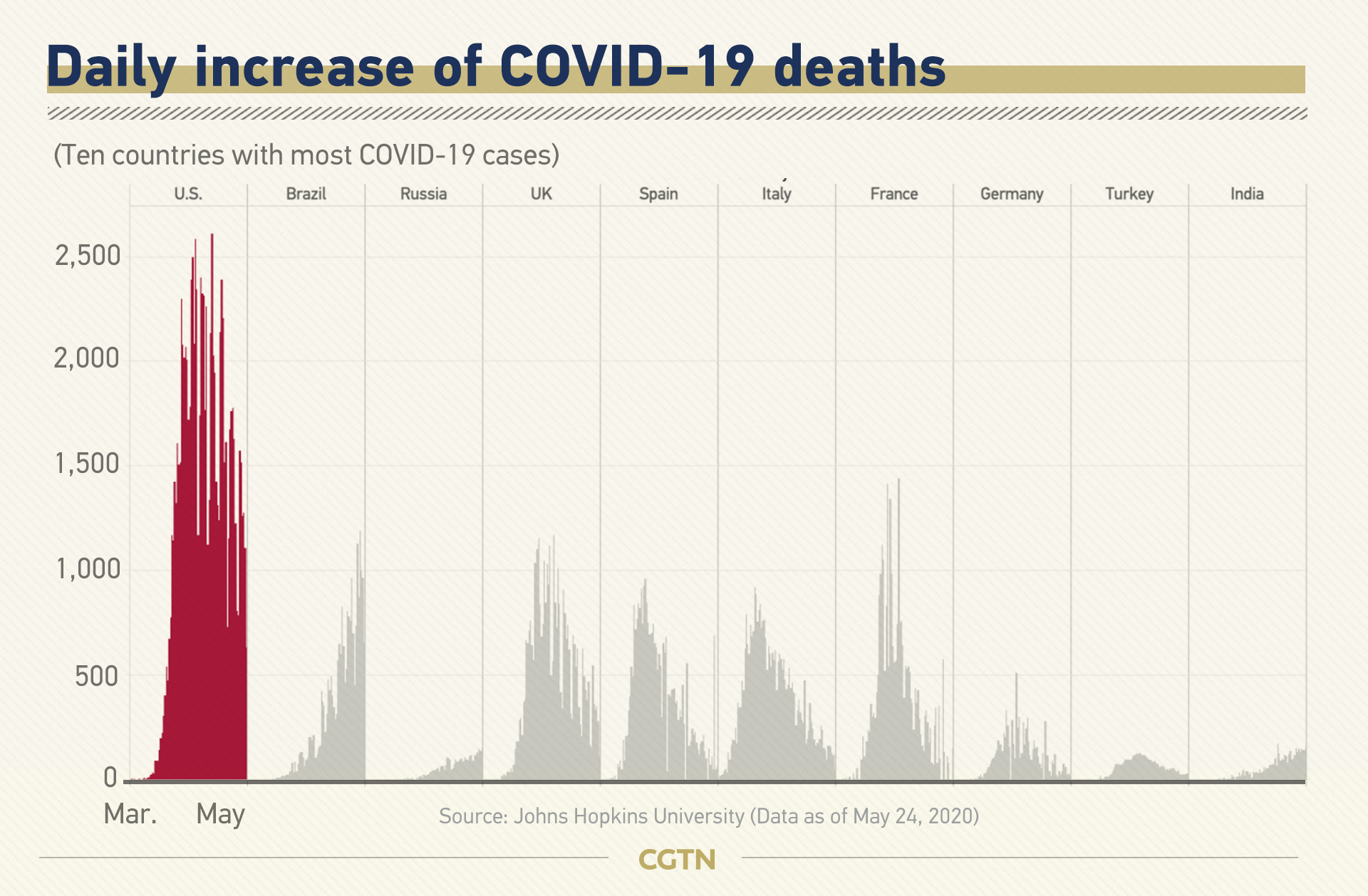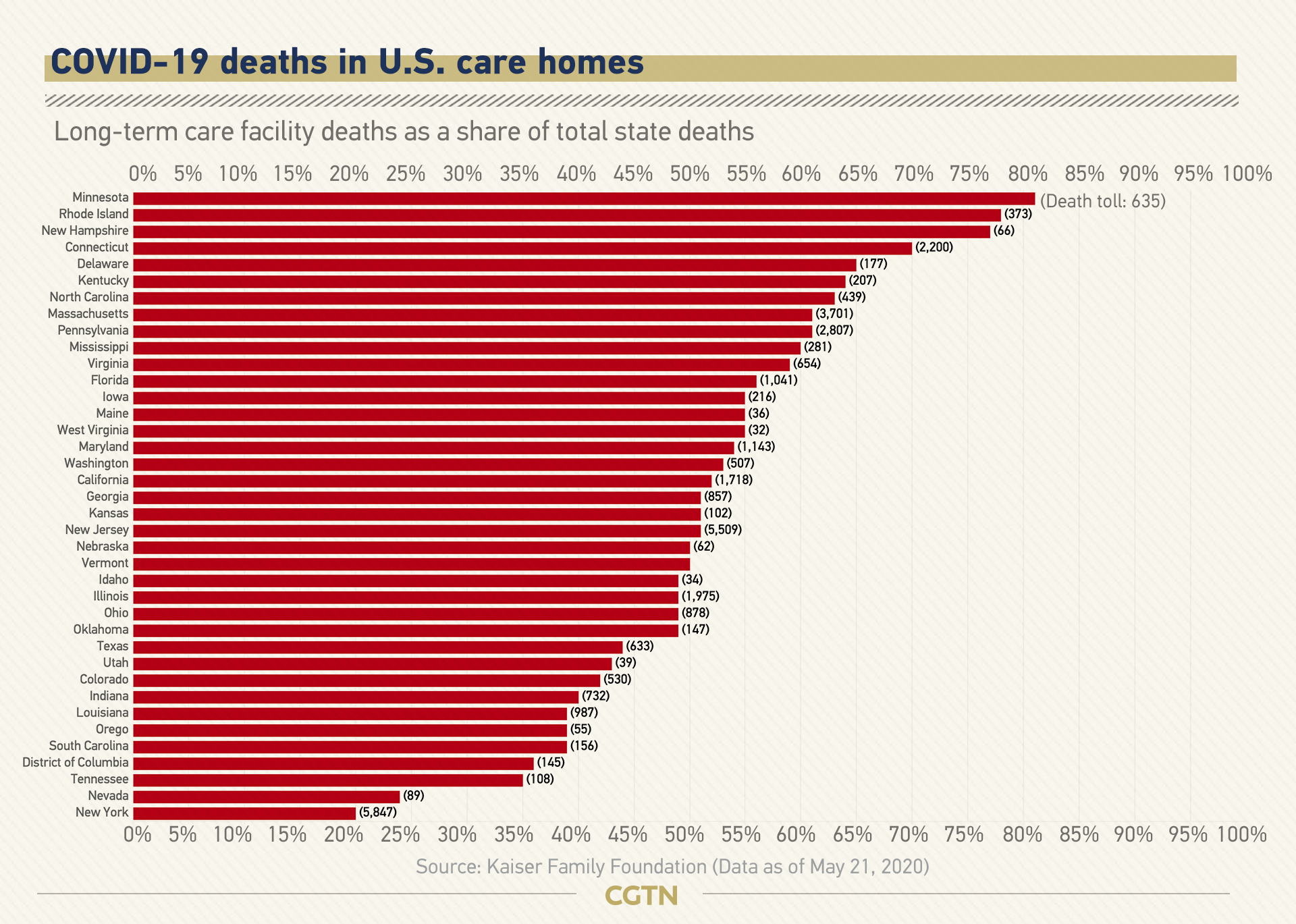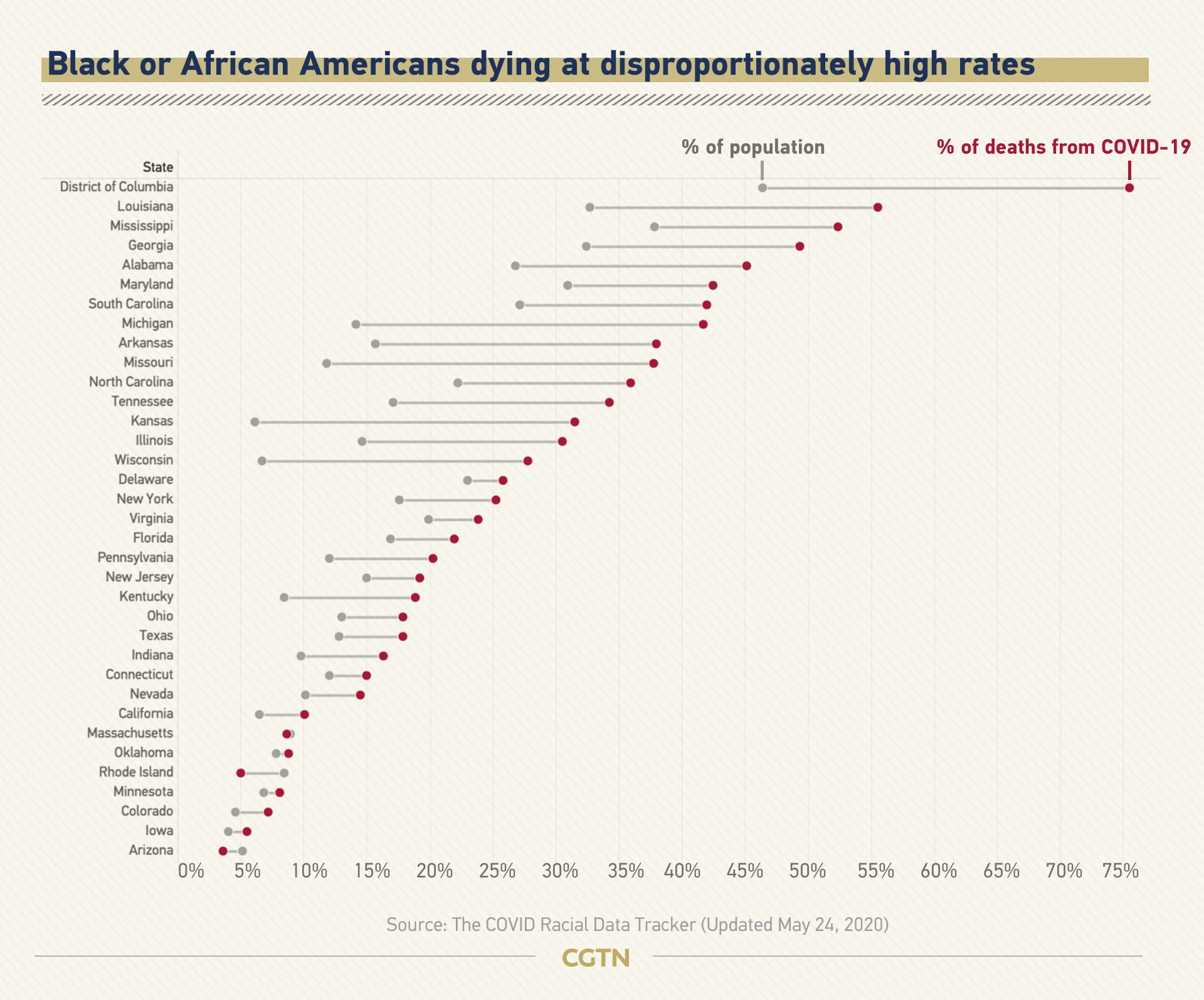The United States is approaching the bleak milestone of 100,000 COVID-19 deaths in the coming days.
The latest data from the Johns Hopkins University tracker shows that the country has recorded over 98,900 deaths on Wednesday, with about 700 new fatalities.
Though the U.S. has passed its peak in daily new deaths in April and is seeing a downward trend, the number is still alarming when compared with the rest of the world.

Who has been the most at risk? The first answer could be the nursing home residents.
The virus is known to be particularly lethal to the elderly with underlying chronic health conditions, and can spread more easily through shared or congregate facilities.
The country's first death from COVID-19 took place at a nursing home in the Seattle suburb of Kirkland, which was later dubbed "ground zero" for the country's outbreak.
The Kaiser Family Foundation (KFF) estimates that in the 38 states for which data exists, 42 percent of deaths from COVID-19 have occurred in such long-term care facilities.
Minnesota tops the list with 81 percent of its COVID-19 deaths taking place in such facilities. The figure is above 50 percent in more than 20 states across the nation.
New York state, the U.S. epicenter of the outbreak with close to 30,000 deaths, has the lowest share of deaths linked to care facilities at just 20 percent.
As of May 21, over 7,700 long-term care facilities in 43 states had known cases of the novel coronavirus, KFF said.

The virus has been hitting Black or African Americans especially hard as well.
They account for 13 percent of the U.S. population but 25 percent of COVID-19 deaths where race is known, according to COVID Racial Data Tracker.
Though the pandemic seems to equally affect people of all races and backgrounds, in the United States, Black or African Americans are dying at disproportionately higher rates.
About 20,400 Black or African Americans are known to have been killed by the virus, the tracker shows.
Related reading:
The redlined, the underpaid, the uninsured: Black or African Americans in COVID-19 pandemic
Throughout history, Black or African Americans have been disproportionately afflicted by pandemics, including the 1918 influenza, known as the "Spanish flu," and the H1N1 swine flu.
Even after a century, their relative circumstances have barely improved. The coronavirus outbreak is just the latest disaster to amplify these racial disparities.

Calling it "an incalculable loss," the front page of Sunday's New York Times featured the names of 1,000 Americans who have died of COVID-19, reflecting one percent of the toll.
"Why has this happened in the United States of 2020? Why has the virus claimed disproportionately large number of black and Latino victims? Why were nursing homes so devastated? These questions of why and how and whom will be asked for decades to come," the report said.
These questions also need to be addressed right now.
(With input from agencies)
Graphics: Jia Jieqiong